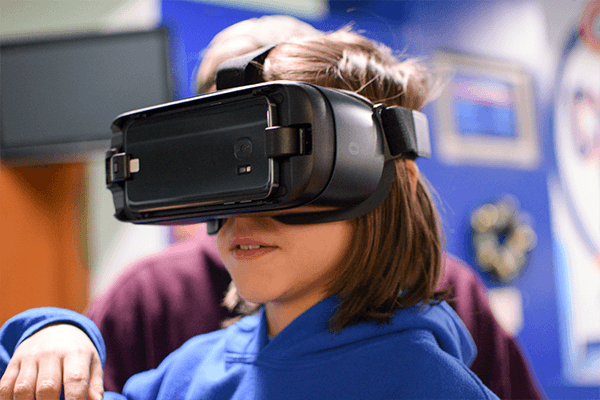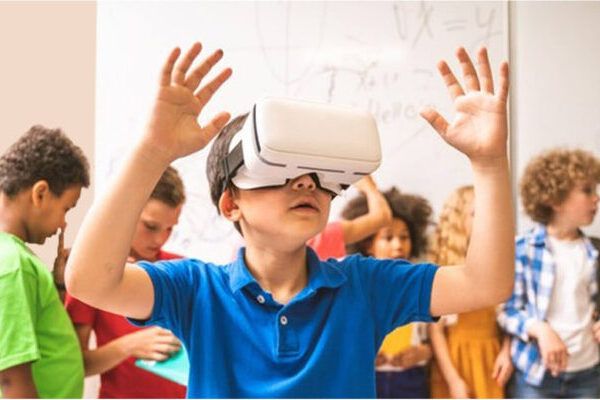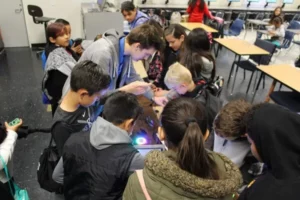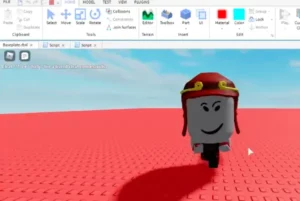Virtual reality for children: what you need to know

Virtual reality (VR) is very attractive for children and teenagers, especially since much of its use is related to video games. In this article, we tell you what this new form of entertainment is all about, what children can learn by using it, and what the future may hold. In addition, we recommend accessories and educational applications for your children.
What is virtual reality?
Virtual reality is an artificial three-dimensional environment generated with software. This environment can be similar to or completely different from the real world. The environment is viewed through a virtual reality device or headset (glasses or goggles), and the user can interact using accessories such as gloves or suits, which allow different stimuli to be perceived.
Virtual reality in education
There are many benefits of virtual reality in the teaching and learning process. Virtual Reality has been effectively used in training, coaching, psychotherapy, and other fields. Because of the positive changes that VR is producing in teaching, it is believed that VR may eventually replace some pedagogical methods.
Some advantages of virtual reality used as a teaching resource:
- Quickly captures children’s attention
- Facilitates interaction
- Learning is playful
- It has a wide variety of content
- Improves the development of hands-on activities
What can children learn with VR?
There are a handful of virtual reality options and with each option comes an extensive variety of educational topics. Children can take virtual field trips, experience art education, receive tutoring, explore the international space station, and experience many other fields in education. By encountering VR, children are immersed in a different world and enhance their imagination and creativity. Children learn and discover new possibilities. Leisure and entertainment are changing significantly, and this new way of having fun opens many opportunities in education.
With virtual reality, children can:
- Go on excursions to different countries
- Visit museums
- Explore the lunar surface
- Travel back in time
- Learn about history
- Explore the human body
- Learn languages
- And so much more!
What do children think about the VR experience?
Through virtual reality, children are the protagonists of different experiences. In this sense, everything they feel or do is important. Those who have tried it highlight the possibility of living different experiences and being transported to unreal worlds.
Cutting pumpkins in the air, picking up coins, and above all, playing with colleagues, collaborating to solve different challenges is all part of the experience.

BONUS: Virtual Reality recommendations for children
Children under 12 years old
Younger children can use Google Cardboard or BNEXT VR headset, compatible with iOS and Android mobiles. They are inexpensive and easy to use. In addition, they are used with downloadable apps from the internet, with which you can enjoy entertainment and educational content.
Over 12 years old
If you have teenagers, you can try mobile VR glasses, such as Samsung Gear VR. The device is very comfortable and offers a more believable and captivating gaming experience. The Samsung Gear VR is compatible with Samsung Galaxy and other Samsung products.
BONUS 2: Four educational virtual reality apps.
VR Language App by Mondly – With this app, kids can learn languages in an interactive and fun way with virtual characters. They can get instant feedback on pronunciation, as well as vocabulary suggestions. They can also participate in realistic dialogues inspired by authentic events.
Anatomyou VR – This app is ideal for exploring the human body and understanding how it works. The app includes interactive information about anatomical structures and lets the user inspect, in detail, any structure or view it with 360° navigation control.
Unimersiv – This app proposes learning about a wide variety of topics in an immersive way. You can learn about dinosaurs, space stations, the acropolis, or anatomy, among other topics. Unimersiv claims to be the largest platform for VR educational experiences.
VR Lessons by ThingLink – A collection of interactive 360° image and video tours on a variety of topics including science, language, and the arts. The first stories take students to visit different types of ecosystems from the French Alps to a jungle in the northern archipelago of Australia.
The future of virtual reality
Have you ever wondered what the future of virtual reality holds? It’s clear that consumer engagement is growing rapidly. Why is that? Probably because we want to feel more and more unique, and virtual reality gives us that sensation; to create much more personalized experiences than those offered by other technologies.
It is said that, in the future, virtual reality will be massively adopted by society. But when? We are currently at the earliest stage of VR, but soon, it may expand in a variety of ways. It may emerge as a “real-state” complex world for marketers and advertisers, but it may also become a new virtual classroom, a new office cubicle, or a virtual meeting space. Others predict it will enhance the experience of watching a movie or TV show from home.
Looking at these near-term trends will likely determine when virtual reality will become as commonplace as checking email or updating a mobile app.
If you liked this article let us know and remember that our Winter Camp is just a few days away. Students will have the opportunity to experience virtual reality!
Curious about what we do? Schedule a visit to tour our facilities today!
More To Explore

Why Children Should Learn To Program
Learning to program stimulates creativity, teamwork and problem solving. “studies show: children who study computer

Gen Z and its influence on the metaverse: playing Roblox
A few years ago, you would have been hard pressed to find websites, Early on, Minecraft…
